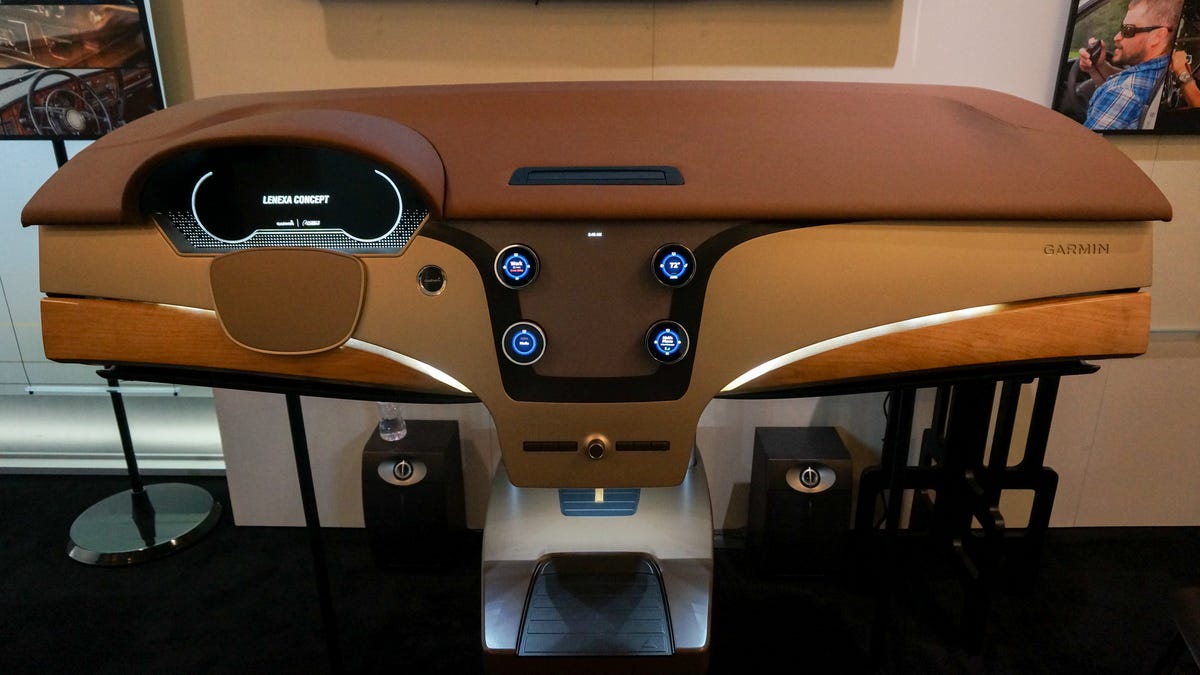Garmin says no to touchscreens, yes to knobs at CES 2016
Garmin debuts its Lenexa concept dashboard in Las Vegas, with a much heavier emphasis on physical, dedicated controls.
Garmin sees a fundamental flaw with the way we access information in our cars. That flaw is the touchscreen. In a private presentation on the floor of the 2016 Consumer Electronics Show here in Las Vegas, Garmin's Automotive OEM team showed me how it is exploring fixing it.
The Lenexa concept dashboard harkens back to a time before touchscreens, when dashboards were simple and dedicated, physical controls for climate and audio were approachable and easy to understand. In its default state, the concept features four large knobs that feature seven-way directional controls -- they can be twisted left and right, pressed like a button and nudged in four directions. On the face of each of these knobs is a small OLED display that shows information about its function.
There's a knob for navigation that, upon startup, displays predictive destinations with traffic estimates. Rotating the knob toggles between predictive destinations on the OLED face and pressing it starts navigation, revealing a secret ghost display embedded in the dashboard material. Here you'll get upcoming turn information, but not a full map. Garmin's rationale is that for most trips (your commute to work, for example) people don't need to stare at a map because they're familiar with the area and that simple turn info and traffic rerouting is key.
Nudging the knob to the left or right displays a list of saved and recent destinations that can be selected with a twist and tap. Knobs dedicated to audio and climate controls work in a similar way. Nudge and more info appears as a list on the ghost screen; twist and tap to make selections.
Garmin's Product & User Experience Manager Kip Dondlinger tells me that for years the industry has been thinking about evolving the dashboard experience like smartphones, with more and more functions being moved to the touchscreen. Dondlinger thinks that gaming controllers are a better metaphor.
"When you're playing Call of Duty or some other game, you can't afford to glance down at the controller. You need to know where everything is so you can react quickly. Dashboards should be as fast in their operation," says Dondlinger. "Nine interactions out of 10 don't really need a screen slowing the driver down."
Garmin acknowledges that there are some functions where you really do need a touchscreen. So, when parked, nudging up on any of the knobs causes a color touch-sensitive display to slide up from the top of the dashboard. Here, the driver or passenger will be able to view a detailed map or input text.
Garmin's moved most of the interaction to physical controls, but the Lenexa dashboard actually six total screens -- four OLEDs between the knobs and two hidden displays.
I spent some time navigating the concept dashboard and found that, while it's not perfect, it was fairly easy to understand, for simple tasks such as skipping tracks, adjusting the temperature or starting navigation to one of the destinations stored in the favorites or recents list. However, the interface isn't as eyes-free as I think Garmin is aiming for and the extra step of waiting for the motorized screen to deploy adds more time to complex steps.
In Garmin's defense, the interface will likely lock drivers out of complex touchscreen functions such as destination search while the vehicle is in motion and, for functions such as address entry, voice input is probably a better alternative. But concepts aren't supposed to be perfect, they're supposed to explore interesting ideas and, as a fan of physical controls, I'll be interested to see these ideas evolve.
Check out the rest of CNET's coverage of CES 2016 to see more cool ideas and products in action.


